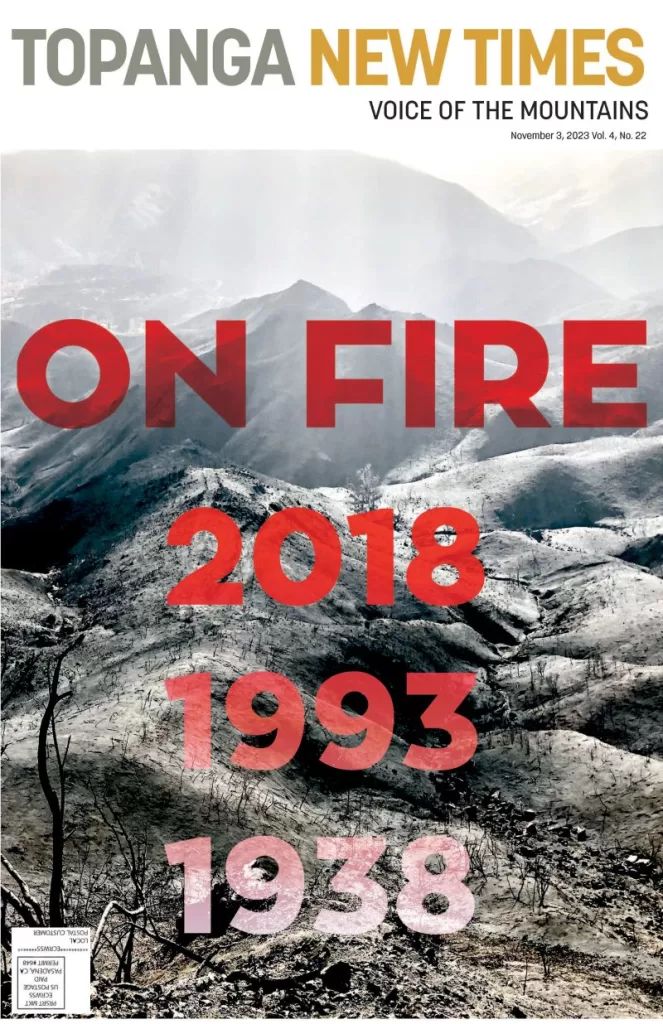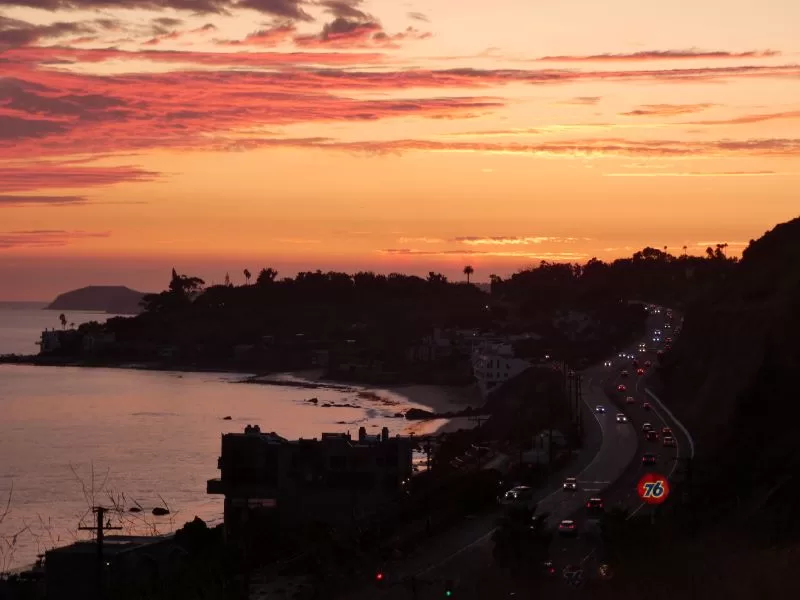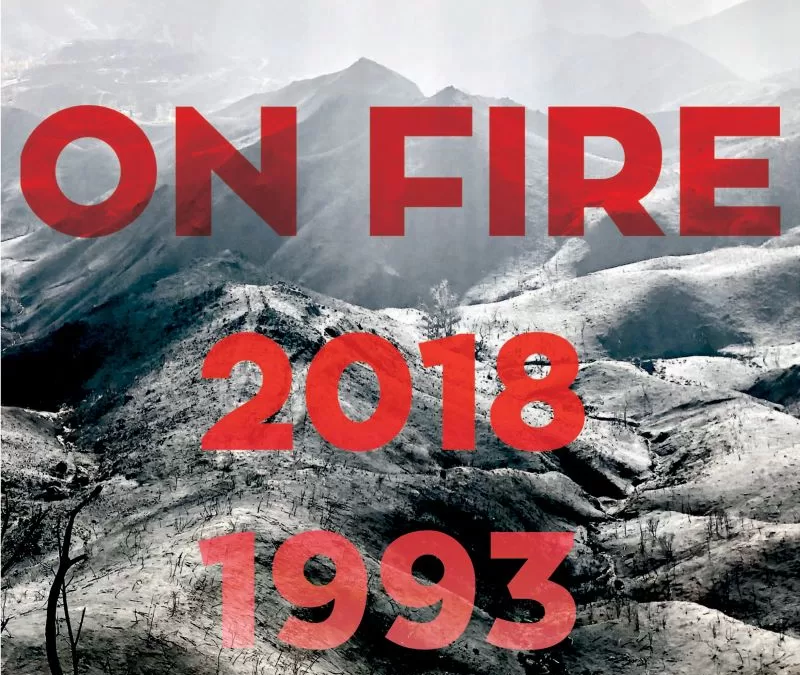
Rising from the ashes. The 2018 Woolsey Fire happened five years ago; the 1993 Old Topanga Fire, thirty years ago; the 1938 Topanga Fire was 85 years ago this November. Join TNT for a look at how wildfire has shaped the history of the Santa Monica Mountains and the people who call this rugged, beautiful, and disaster-prone place home. Cover photo by Jeannie Thompson Cover design by Urs Baur
Los Angeles weather is the weather of catastrophe, of apocalypse, and, just as the reliably long and bitter winters of New England determine the way life is lived there, so the violence and the unpredictability of the Santa Ana affect the entire quality of life in Los Angeles, accentuate its impermanence, its unreliability. The winds shows us how close to the edge we are.
—Joan Didion, Slouching Towards Bethlehem, 1969
Fire. It has shaped our past and continues to shape our future in the Santa Monica Mountains. November marks the fifth anniversary of the Woolsey Fire, the thirtieth anniversary of the Old Topanga Fire, and the eighty-fifth anniversary of the 1938 Topanga Fire, and those are only three of the more than thirty significant wildfires that have impacted the local mountains over the past hundred years.
Here at Topanga New Times we are taking a look back at fire history, and sharing memories from the burn zone of past disasters. We offer these stories as inspiration, a reminder that we made it through those times and that we can rise again—phoenix-like—from whatever disasters the future holds, because we have done it before. The most important message? Learning from the past and being prepared for the next fire, because there will be one.
The first major Santa Ana wind/red flag warning event of the fall arrived Halloween weekend—a trick, not a treat. Everyone was on edge, waiting to find out if our power would be shut off. For many of us, it was.
Critics see PSPS—Public Safety Power Shutoff—as an attempt by SCE to avoid lawsuits, a sign that SCE values the shareholders’ bottom line more than the customers they serve or the safety of the environment, but until high risk lines can be re-enforced or buried safely underground, or until communities or neighborhoods are empowered to establish their own micro grids, power outages and the attendant communication outages they cause will continue to be part of the stress and anxiety of fire season.

Everyone should have the power outage update page bookmarked: www.sce.com/outage-center/check-outage-status PSPS. It’s also a good idea to bookmark the indispensable T-CEP website: tcep.org. T-CEP—Topanga Coalition for Emergency Preparedness—is a volunteer, nonprofit organization made up of neighbors committed to Topanga’s safety, and it always welcomes donations and new volunteers. Participating is an important way all of us can help keep our canyon safe. We may live “near the edge” but we are in this together as neighbors and as a community, and together, we can get through even the biggest challenges.
Fires can occur year-round, but the danger is almost always at its highest in late autumn, when the vegetation is dry and Santa Ana wind conditions are more prevalent.
Even though the focus is on fire right now, residents of the Santa Monica Mountains also need to spare some thought for wet weather. October 1 marked the official start of California’s “water year.” An El Nino winter with the potential for above-average rainfall is in the forecast and that means even more unpredictable winter weather than usual—if we can be said to ever have a “usual” winter. Fixing leaks, and clearing gutters, downspouts, and drainages now can help prevent major problems later. Renewing emergency water and food supplies, and making sure tires, brakes, and windshield wipers are in good condition couldn’t hurt either. One thing is certain, as we hurtle from one potential disaster to another, life is never dull around here.
Daylight Savings Time ends on Sunday, November 5—a sure sign winter is coming, even when it is currently 80 degrees outside. The time shift takes a powerful toll on human circadian rhythm, the internal clock that regulates the brain’s sleep wake cycle programming. Numerous studies have shown that the time change causes a spike in traffic accidents, and an increase in migraines and even heart attacks. The sudden shift in human behavior also impacts wildlife. Commuters who arrived home before the sun set this week will be on the road after dark after the change, increasing the risk of animal vehicle strikes. The time change also imperils pedestrians. Slowing down and staying alert can help save lives, our own and our neighbors—animal and human.
Stay safe, be well. Don’t forget to fall back!













